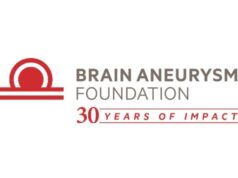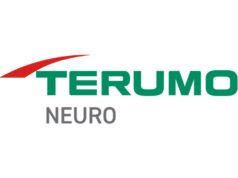
Expert groups from the USA and China have separately introduced new guidelines relating to the management of aneurysmal subarachnoid haemorrhage (aSAH). The updated guidelines—spearheaded by the American Heart Association/American Stroke Association (AHA/ASA)—are intended to provide “patient-centric recommendations for clinicians to prevent, diagnose and manage” aSAH patients, while the latest Chinese recommendations attempt to tackle the “unclarity and inconsistency” of current standards specifically in aSAH-related hydrocephalus.
“Aneurysmal subarachnoid haemorrhage is a significant global public health threat, and a severely morbid and often deadly condition,” write Brian Hoh (University of Florida, Gainesville, USA) and colleagues in the journal Stroke—where the AHA/ASA guideline update is now published. “The 2023 aneurysmal subarachnoid haemorrhage guideline provides recommendations based on current evidence for the treatment of these patients.”
Replacing the 2012 version of a similar guideline document on aSAH management, Hoh et al’s publication sets out to present an “evidence-based approach”, with a key goal being to “improve quality of care, and align with patients’ and their families’ and caregivers’ interests”.
“Many recommendations from the previous aneurysmal subarachnoid haemorrhage guidelines have been updated with new evidence, and new recommendations have been created when supported by published data,” they add. “It also identifies knowledge gaps and areas of care in need of further research.”
The authors report that a comprehensive search for literature published since the 2012 guideline, “derived from research principally involving human subjects”, and published in English, was conducted last year—and that the guideline writing group reviewed documents on related subject matter previously published by the AHA as well.
A key emphasis of the 2023 guidelines is that improving timely and equitable access to healthcare system resources like comprehensive stroke centres is “important” to improve overall patient outcomes, and timely transfer to centres with expertise in aSAH is “recommended”. Prompt evaluation, identification of aneurysmal source, and treatment of ruptured aneurysms are recommended—preferably within 24 hours—owing to the fact that acute rebleeding after an initial aSAH is associated with increased mortality and poor clinical outcomes.
Several other prevailing messages are established within the new AHA/ASA guidelines. These include the need for risks assessments and relevant expertise when deciding on how best to intervene; optimal approaches to new-onset seizures, delayed cerebral ischaemia and other medical complications; and cerebrovascular imaging usage and subsequent monitoring in planning for aneurysm remnants, recurrence, or regrowth, post-treatment.
The important role played by multidisciplinary care is also a recurring theme throughout, with Hoh et al noting that aSAH management with dedicated neurocritical care units, experience with higher case volumes, physician expertise in aneurysm treatment, expert nursing care, and multidisciplinary teams, is associated with lower mortality and an increased likelihood of good functional outcomes. Similarly, a multidisciplinary approach to identify discharge needs and design rehabilitation treatment is recommended in the guidelines. Validated screening tools to identify deficits, as well as interventions for mood disorders and counselling, “may be beneficial” too, the authors add.
Chinese guidelines home in on hydrocephalus
The authors of a Chinese expert consensus on aSAH-related hydrocephalus—now published in the Chinese Neurosurgical Journal—describe the pathophysiology of this clinical syndrome as “complex”, also noting that “there is no standard diagnostic criteria and treatment protocol in China, [or] abroad, currently”; nor is there consensus among clinicians on whether active treatment is needed or what treatment is preferred.
“Therefore, diagnosis and treatment of aSAH-related hydrocephalus have been puzzled by the unclarity and inconsistency of standards,” they continue. To address these problems, Shuo Wang (Capital Medical University, Beijing, China) led an expert group to compose a consensus with reference to much of the updated literature, both in China and elsewhere globally, in an effort to meet the “urgent need” for clarity and consistent standards.
“Hydrocephalus is a common complication following aSAH and currently, the diagnosis and treatment of aSAH-related hydrocephalus is clouded by a lack of clarity and inconsistency of standards,” explained Wang. “We wanted to make definite progress toward removing the ambiguity tied to its treatment.”
This expert consensus applies to adults, but it is a good reference point for clinical diagnosis and treatment.
In terms of occurrence, the experts identified that aSAH-related hydrocephalus is determined by the location of the aneurysm, intraventricular haemorrhage, and volume of the SAH. Disturbances in cerebrospinal fluid (CSF) circulation drive the pathogenesis of aSAH-related hydrocephalus, enlarge the ventricular system, and damage the brain’s white matter. In terms of factors contributing to the risk of this syndrome, the experts concluded that age, volume of SAH, and the location and size of aneurysms, are related to the occurrence.
The consensus states that the standard-of-care approach to diagnosis should include reviewing a patient’s history of aSAH-related hydrocephalus, identifying its clinical manifestations, and a head computed tomography (CT) scan to detect abnormal enlargement of the ventricles. It also posits that the main objective of aSAH-related hydrocephalus treatment should be to release excessive intracranial pressure or address pathological changes to brain tissue to prevent further damage and loss of neurological function. This can include medications inhibiting CSF secretion or surgical interventions, such as CSF drainage, shunt surgery, and intracranial diversion.
Furthermore, the consensus guidelines recommend external ventricular drainage and ensuring the safe removal of the CSF drainage tube in the case of acute hydrocephalus. A ventriculoperitoneal shunt is recommended by Wang et al for cases of chronic hydrocephalus. The effectiveness of a shunt procedure can be confirmed with a positive lumbar puncture preceding surgery. The consensus concludes by suggesting measures to minimise postoperative complications—recommending strict aseptic surgical procedures; anti-siphon and pressure-adjustable shunt catheters; monitoring of clinical manifestations; and use of imaging and laboratory examinations for management.
“This expert consensus applies to adults, but it is a good reference point for clinical diagnosis and treatment,” Wang added. “Further research will certainly refine the process of aSAH-related hydrocephalus diagnosis and treatment.”










